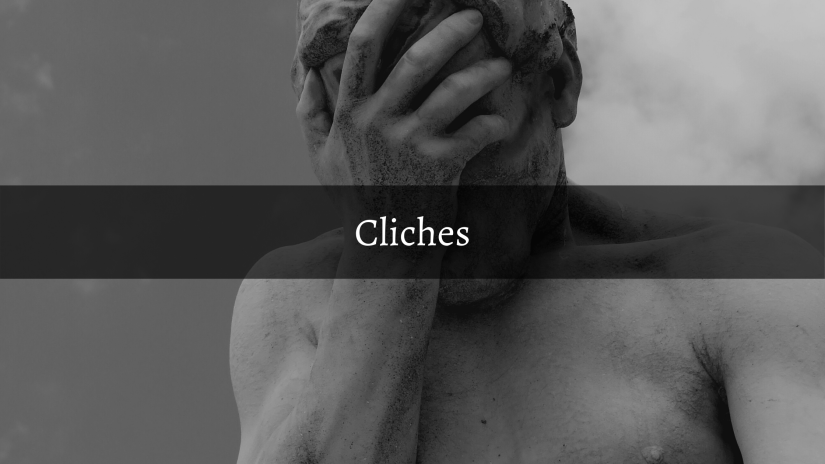
Sensory Cliches

Today I am writing to talk to you about sensory cliches.
Now, like with all cliches I can understand why they are used. Like, character cliches which are used to establish character traits quickly these are used as short cuts. But like character cliches which can work well for background or side characters that you don’t want to spend tons of time developing because you’re basically using them to make a point or be cannon fodder, sensory cliches can work well in small doses.
The sensory cliches are a bit different to character cliches though, while they are used as a short cut the same way character cliches are their shortcut is a shortcut to stakes not personality.
Sensory cliches attached to the protagonist will be used as a way to raise stakes and sensory cliches attached to the monster will be used to lower stakes. As they will always be used to establish a weakness for either the protagonist or the monster to exploit.
Sight

When the ‘sight’ cliche is used on the protagonist they will be blind, thus immediately giving them a sense of vulnerability. They literally cannot see the world around them or the treat.
Unfortunately, this cliche is often poorly used with either the blind protagonist being completely vulnerable and unable to exist without maximum assistance, or the writers will go down the other route of having the protagonists’ other senses being unrealistically super human sharp.
Fortunately, I am pleased to say that this does seem to be improving with films like Birdbox, where characters, while not blind, are deprived of their sight. Also, I know it isn’t horror but Toph in Avatar is a good example of blind representation.
When the sight cliche is used on the monster usually it will be used to enhance stakes, the monster will be invisible, or seeing the monster will break your tiny little mind, again see Birdbox.
On occasion the monster will be blind, such as the film Don’t Breath, but usually when this is done the monster is given unbelievable power in all their other senses, again see Don’t Breathe.
Speak

Again, when used on the protagonist this will be used to make the protagonist more vulnerable. Usually by making them mute, or by making people not hear them, either through spite, ignorance or lack of perception. This sensory cliche isolates your protagonist easily and immediately ups the threat.
When used on the monster this cliche can be employed to make speaking the monsters name summon the creature or irritate it enough so that it focuses on you. But the reverse can also work, usually with demons, where learning and speaking its name gives you power over it.
The monster can also have some kind of vocal power, where it speaking can break people’s minds or cause physical damage to whatever is surrounding it.
Hearing

When used on the protagonist this cliche will usually make them deaf and suffers from all the same problems as the sight cliche does as a result.
When used on the monster this cliche can give the monster amazing audio perception, such as the film A Quiet Place. Again, like the speech power it can also work to the monsters detriment, making them vulnerable to loud sounds.

I’d love to hear what you think, please comment below.